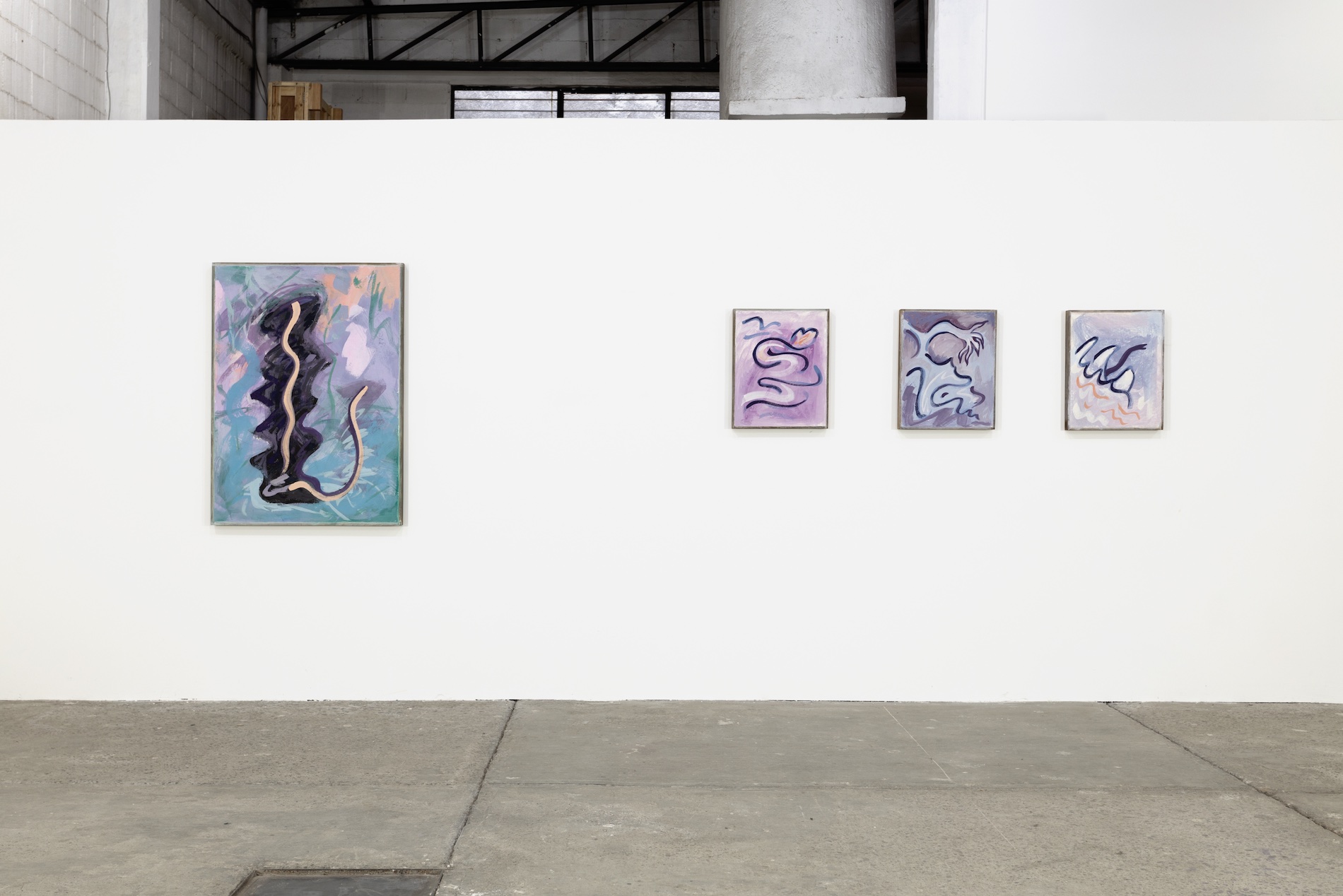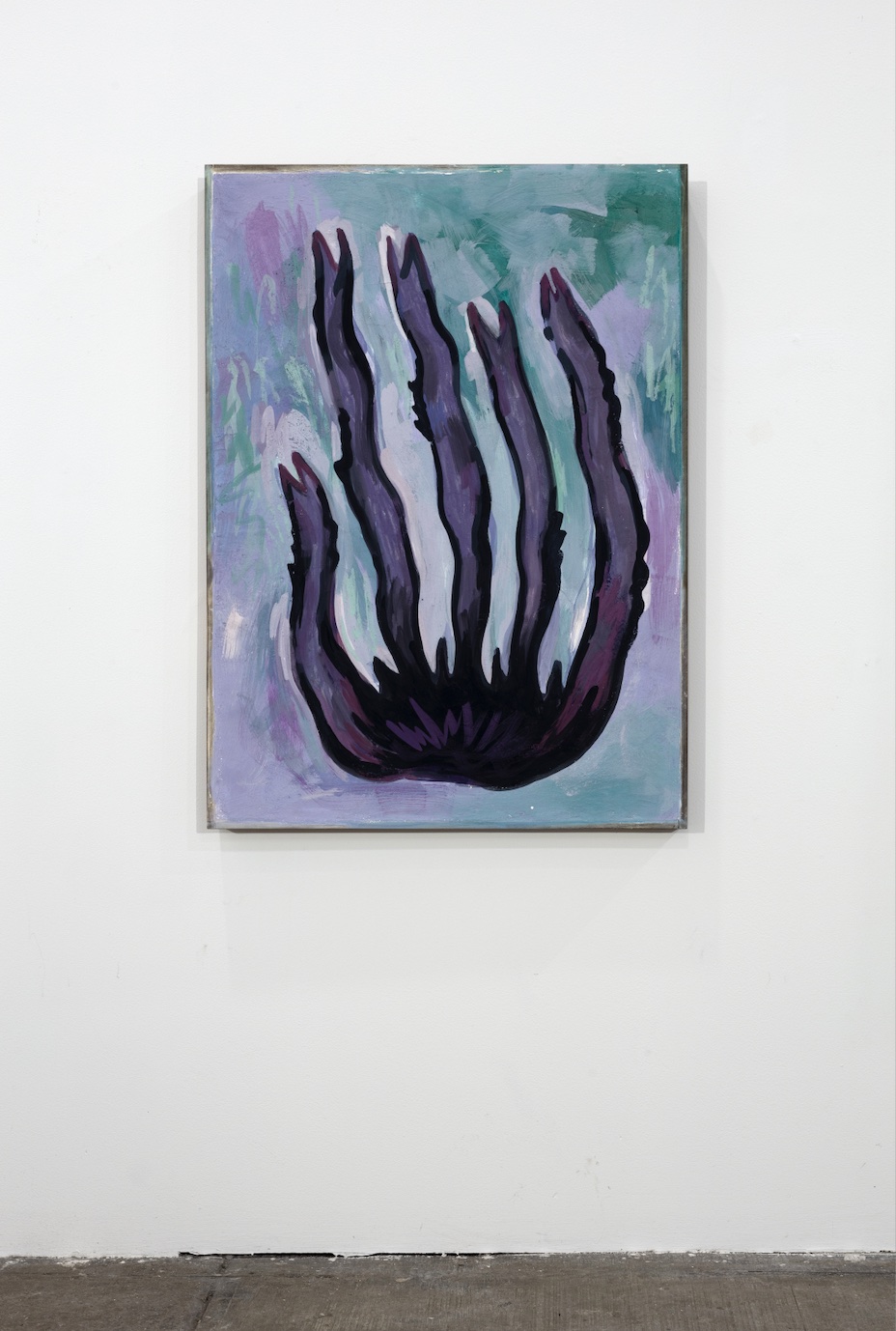
Review
Deep-rooted aguacal*: 'Notes from the Underground' by Lorena Ancona at LLANO
by Mariana Paniagua
Reading time
4 min
I entered Notes from the underground, thinking about how water passes through the pores of the clays and dirt; how fertile the moisture emanating from within is. The body of the exhibition is thirteen paintings of dirt, pigments, and aguacal on stuccoed frames of different scales, and four vertical ceramic sculptures with black engobe.
Before coming, I heard Lorena Ancona in an interview² share her experience as an artist from the Yucatán peninsula, as well as her approach to the artistic practices of the pre-Hispanic Maya. Great observers of the celestial vault, I imagine them distinguishing–now inside an earthly, dark, and telluric vault–by the brightness of the small crystals, the attapulgite: a type of clay that can be joined, because of its chemical structure, to the indigo blue ink obtained from the indigo plant Indigofera tinctoria or indigo plant, to get the Mayan blue.
This knowledge of material transformation is also found in the Yucatec Maya language, in which the words sak, ek', chak, k'an, and ya'ax refer to its primary colors: white, black, red, yellow, and blue-green, respectively. The compounds for the different shades of each color were chosen with great precision and sensitivity. For example, the word ya'xkab is used for "clear turquoise blue thing" and points to the spectrum that transits between blue and green with transparency and luminosity; ya'xhule'n names the color of the sky; ya'xk'ole'n, the color of clear weather; ya'xila', the very deep bottomless water; ya'axil ha', the green color that "takes the water by depth."³ A large part of the terms for plants and animals is designated by color, as well as different emotional states, diseases, types of soil, and their properties.

Ancona revisits this charged landscape of color from blue and coldness. From the back of the stucco, with the pigments more diluted and absorbed by the surface, emerge more solid and graphic brushstrokes that write snakes as signs. Just as malleable as the term ya'ax, they also trace roots, tails, tongues, claws, and the concave shape of the caves, evoked by the flows of water and air that pass through them.
The colors deepen the surface with the density of their material history and guide us to the interior of a cavern, going back to the line of obtaining their pigments and what gives them body, in a narrative that follows the continuity of its own mystery.
In Ríos a través de cuevas [Rivers through caves], the palette places us in front of a root or a river delta in the depths of some night underwater or under the rock, surrounding us with the silence so specific to those two environments. Next to it, Kab, on a luminous pink background, insinuates a snake crossing another one, which at the same time acts as a cave, but this time open and diurnal.

In this series of paintings, there is a mystery that is not hermetic but is shown in the foreground with an apparent economy of gestures, yet complex in the rituality it invokes: the landscape from a vulnerable genealogy of knowledge.
The white space of the gallery and the environment delimited by the paintings, with diluted palettes, contrast with the black and vertical forms: two of them hang like stalactites, with the same ancestral weight that drags the snakes on their bellies, while the other pair grows from the ground like two stalagmites. As polysemous as the paintings, these sculptures resemble both a limestone formation and a marine animal, both flower and snake. Their branched or coiled forms seem to filter and disperse some sage, water, or poison in this speculated cavern.

In Lengua de tierra [Dirt Tongue] and Estalagmita [Stalagmite], as in the painting Vientos en cueva [Winds in a Cave], the undulating sprouts from the ground with a rarefied gravity that erases the differences between what rises and what descends. Hollowed out like amphorae, both Caracol y flor [Snail and Flower] and Pitahaya y flor [Pitahaya and Flower] hang from the ceiling with henequen ropes, echoing the stalactites that, like vessels, act as a dripping water collector, transforming liquid into stone.

Without creating a stage, Ancona subtly unfolds in space the concavity and scale of a cavern to rehearse a materiality researched from the depths with the processes and forms that inhabit it.
Translated to English by Luis Sokol.
1: Lime mortar, with some plaster, used for whitewashing.
2: In a podcast called Pata de mono by Diego Aramburu.
3: Savkic, Sanja. “El léxico cromático y la ideología maya”. Estudios de cultura maya, UNAM vol. 37 (2011).
Published on May 25 2024